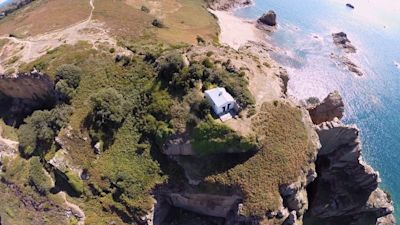Ancient Jersey teeth reveal roots of modern humans

48,000-year-old teeth found in a Neanderthal cave in Jersey could be evidence of a hybrid population of Neanderthals and modern humans.
Between 1910 and 1911 thirteen teeth were found at the Cotte de St Brelade in Jersey.
At the time they were thought to belong to one Neanderthal person.
Now over a hundred years later, new research indicates they belonged to two individuals who may also have had modern human ancestry.
Researchers from the Natural History Museum, UCL and University of Kent, among others, used computed tomography scans to study the teeth in greater detail than previously possible.
The teeth may be among the last known Neanderthal remains and help to uncover why the species disappeared to be replaced by modern humans or Homo sapiens.
The Neanderthal population evolved around 400,000 years ago and inhabited a large area from western Europe to Siberia.
They were typically shorter and stockier than modern humans, with a thick ridge of bone overhanging the eyes.
La Cotte de St Brelade has been excavated by numerous archeologists, and even a young Prince Charles for over a century.
In 2019 Jersey Heritage undertook a major project to protect the site from rising sea levels and coastal erosion.
Once Covid-19 restrictions permit, researchers hope to resume their work to find further evidence of Neanderthal and modern human mixing buried in the cave's sediments.
Although the museum is currently closed to the public the teeth are available to view digitally on the Human Fossil Record website.